 |
Keynote speakers
We are excited to bring to you keynote speakers
with a global to local perspective on restoration issues. All speakers
are outstanding presenters and leaders in their field and span the
social, business, community and science angles of restoration in
the Australasian region.
 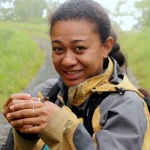 Nunia Thomas is Acting Director at Nature Fiji at Mareqeti
Viti, Suva, Fiji.
Nunia Thomas is Acting Director at Nature Fiji at Mareqeti
Viti, Suva, Fiji.
Keynote title: Toolkit for
Ecosystem Service Site-based Assessment in Fiji
Nature Fiji-Mareqeti Viti is Fiji's only local membership based organisation working solely for the conservation and sustainable use of Fiji's biodiversity.
In 2013, NatureFiji-MareqetiViti began testing the Toolkit for Ecosystem
Service Site-based Assessment in the Fiji Islands to capture community/
landowner understanding of the value of their forests and the impact
of their decisions on land use.
The Toolkit has been tested in three communities with varying dependence
and perception of their forest; and varying distance from an urban
area and access to market places.
About Nunia Thomas: With her first
project with Nature Fiji-Mareqeti Viti launched in April 2008 (the
Endangered Species of Fiji website), Nunia has so far managed fourteen
of the organisation's 30 plus projects; she is the Fiji NGO focal
point of the Ramsar Conventional on Wetlands Communication, Education,
and Public Awareness; is technical advisor on the government led
American Iguana Eradication Campaign Task Force, National Protected
Areas Committee, NBSAP Species working group, manages the organisation's
biodiversity campaigns and volunteers; and is Nature Fiji-Mareqeti
Viti's herpetologist in biodiversity expeditions.
Read more about Nunia Thomas...
 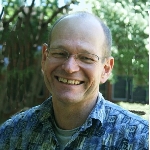 Dr David Freudenberger is Senior
Lecturer Fenner at the School of Environment and Society, Australian
National University, Canberra, Australia.
Dr David Freudenberger is Senior
Lecturer Fenner at the School of Environment and Society, Australian
National University, Canberra, Australia.
Keynote title: Concepts and
challenges of achieving scale in restoration.
A fundamental principle of conservation is to address threats at
the scale of the threatening processes. Markets are needed to provide
the solution. Every market is based on two fundamentals: supply
and demand. Creating both are major challenges for landscape scale
restoration that efficiently reduces habitat loss, fragmentation
and degradation.
About Dr David Freudenberger: David
has a diverse research career commencing in 1980. David joined CSIRO
Wildlife and Ecology in 1991. By 2000, CSIRO shifted research focus
from eastern rangelands to agricultural landscapes dominated by
woodlands. This led to research on the impact of landscape fragmentation
on woodland bird assemblages and other taxa. In such highly cleared
landscapes, restoration is a priority, so David led a number of
research projects on the ecosystem services derived from government
supported native plantings in southern NSW. Joining the NGO, Greening
Australia, as Chief Scientis in 2007, his collaborative research
projects included effectiveness and cost of revegetation technologies,
carbon sequestration measurement and modelling, biofuels from native
species, and the benefits of biochar application for improving restoration
effectiveness. David joined ANU in 2012 to continue research in
applied restoration practice and lecture in management of wooded
landscapes. He also consults for the Australian mining industry
on rehabilitation design and implementation.
Read
more about Dr David Freudenberger on the University's web site

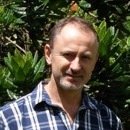 Dr Laurent L'Huillier is a Senior Research Scientist
and General Director of New Caledonian Agronomic Institute (IAC)
Noumea, New Caledonia.
Dr Laurent L'Huillier is a Senior Research Scientist
and General Director of New Caledonian Agronomic Institute (IAC)
Noumea, New Caledonia.
Keynote title: From degradation
to restoration in New Caledonia
The islands of Asia and the Pacific gathered an exceptional biodiversity
that evolved under conditions of isolation and in often limited
areas.
As one of the world's 34 hotspots for biodiversity, degradation
of New Caledonia's biodiversity began more than 3000 years ago with
the arrival of the first peoples, and accelerated sharply in the
19th century. Awareness of extensive environmental damage in the
1970s has generated the development of the first research programs
to limit soil erosion and loss of biodiversity. This presentation
will attempt to present the main results of such research and how
these evolved for over 40 years to take account gradually and increasingly
of environmental characteristics, for improved concept and practices
of ecological restoration.
About Dr Laurent L'Hullier: Laurent
first worked at IRD Noumea for 10 years in soil and plant science
focusing on soil-plant relationships on different type of soils
in New Caledonia. He became interested in studying metals in plants,
especially nickel, the risks of plant toxicity, Ni mobility in soils,
bioavailability and physiological effects including mechanisms of
intoxication. Now, as a plant ecologist with IAC for around 10 years,
Laurent's research focus is on ecological restoration of mining
sites. His interests include the ecology and physiology of endemic
plants on ultramafic soils of New Caledonia, seed ecology and dormancy,
and the study of substrates and specifically topsoils. Improved
scientific knowledge and transfer for the development of activities
working for the conservation, the valorisation of the native flora
and native habitat restoration are his main concerns.
Read
more about Dr Laurent L'Huillier on the IAC's web site...
 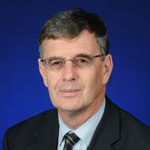 Professor
Bruce Clarkson is Dean of the Faculty of Science and
Engineering and heads the Environmental Research Institute (ERI)
at the University of Waikato, Hamilton, New Zealand. Professor
Bruce Clarkson is Dean of the Faculty of Science and
Engineering and heads the Environmental Research Institute (ERI)
at the University of Waikato, Hamilton, New Zealand.
Keynote title: From island restoration
to the urban frontier
The islands of Aotearoa/New Zealand have been isolated in the South
Pacific for around 60 million years, resulting in a unique and highly
endemic terrestrial flora and fauna.
There are now approximately 2264 introduced species naturalised
in terrestrial habitats. The displacement of native flora and fauna
by these introduced species is a primary challenge faced by conservation
and restoration practitioners. Conservation approaches have evolved
significantly since the 1890s. Early efforts were focussed on saving
threatened endemic birds on small offshore islands. There has been
a gradual shift towards ecosystem management and restoration, first
of larger offshore islands and, more recently, of mainland islands
or sanctuaries sometimes with the aid of novel fencing and predator
control technologies. Urban restoration, the new frontier, has a
relatively short history in New Zealand. Urban projects in the 1970s
and 1980s were characterised by revegetation and weed control but
the emphasis has been moving towards indigenous biodiversity and
an ecosystem management approach since the 1990s.
About Professor Bruce Clarkson: He has produced some 85 publications
on various aspects of the systematics, ecology and restoration of
New Zealand native plants and vegetation. Throughout his career
he has applied his research, often working alongside community groups,
to assist in the protection and restoration of native plants and
ecosystems. In 2005, with independent consultant Dr Wren Green,
he carried out a review of progress on the New Zealand Biodiversity
Strategy, and in 2006 he was awarded the Loder Cup, New Zealand's
premier conservation award. From 2005 to 2012 he led a New Zealand
government-funded research programme looking at the best methods
to restore indigenous biodiversity in cities. Professor Clarkson
is a board member of the Australasian chapter of the International
Society for Ecological Restoration.
Read more about Professor Bruce Clarkson on the University's web
site ...
 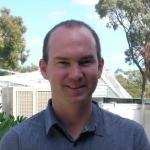 Dr
David Merritt, Research Scientist and Manager Seed Science,
at the Botanic Gardens and Parks Authority (BGPA), Western Australia. Dr
David Merritt, Research Scientist and Manager Seed Science,
at the Botanic Gardens and Parks Authority (BGPA), Western Australia.
Keynote title: Seed-based technologies
for the restoration of biodiverse landscapes.
Large-scale, precise use of seeds of wild species underpins the
achievement of global restoration targets. Currently a significant
limitation to the effectiveness of direct seeding is the poor conversion
of seeds into established seedlings. Co-ordinated seed science underpinned
by ecological principles and the adaptation of advances in seed
technologies, such as seed enhancement treatments to wild species,
is necessary to fulfil restoration targets. The development of such
technologies along with strengthening of interactions and synergies
between seed scientists and restoration practitioners will help
to ensure that seeds are deployed to their full potential in landscape
scale restoration
About Dr David Merritt: David manages
BGPA's seed research programs that focus on progressing fundamental
and applied aspects of seed biology and technology to improve how
seeds are used for conservation and restoration. Research programs
cover diverse ecosystems across Western Australia and include collaborations
with the university sector, NGO's, and the resources industry.
A seed scientist for more than 15 years, David's research interests
include seed storage physiology and longevity, seed dormancy and
germination, and the development of seed enhancement technologies.
A particular focus of David's work is the integration of these sub-disciplines
of seed science to improve techniques for the seed-based conservation
of plant biodiversity and the restoration of degraded habitats.
David is a member of the National Steering Committee of the Australian
Seedbank Partnership that works to conserve Australia's species
through a national network of seed banks, and a member of the International
Society for Seed Science and the Society for Ecological Restoration.
Read more on BGPA's web site ...
 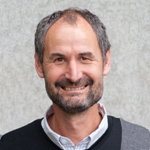 Prof
Murray Potter, Professor of Zoology, the Major Leader
for Zoology and the Ecology Group Leader at the Institute of Agriculture
and Environment, Massey University, New Zealand. Prof
Murray Potter, Professor of Zoology, the Major Leader
for Zoology and the Ecology Group Leader at the Institute of Agriculture
and Environment, Massey University, New Zealand.
(Presenting research of Murray A. Potter, Fabrice Brescia
and Rebecca L. Stirneman)
Keynote title: Social Impediments
to the Management of Invasive Species for Species and Ecosystem
Conservation: What is the Way Forward?
Major advances have been made in the control and eradication of
invasive vertebrate species from both small and large islands, and
data on Island Invasive Species Eradications is freely accessible
(see http://www.islandconservation.org/
and http://diise.islandconservation.org/).
Technology and expertise exists now to achieve truly amazing eradications
such as the recent removal of rabbits, rats and mice from 128 km2
of Macquarie Island. So far, however, most eradication attempts
have been on islands smaller than 500 ha and in temperate climates
(Keitt et al. 2011 In Veitch, Clout and Towns. Island Invasives:
Eradication and Management). What are the issues that have contributed
to this bias? Even when excellent data exist to indicate a significant
negative impact of exotic pests, apathy, local traditions, religious
beliefs, and politics may impede implementation of invasive species
management, even when there could potentially be financial gain.
The root cause of lack-of-engagement might best be understood within
a 'Tragedy of the Commons' framework. Here we will present two case
studies, one on the link between forest degradation and depredation
rates of Ma'oma'o honeyeater (Gymnomyza samoensis) nests
by rats in Samoa, the other on the link between rodent densities
and sustainable harvest rates of Placostylus snails in New Caledonia.
We will investigate social impediments to the successful implementation
of conservation management strategies and discuss the underlying reasons.
We will assess whether Elinor Ostrom's eight "design principles"
of stable local pool resource management offer a way forward.
About Professor Murray Potter: Murray
is Professor of Zoology, the Major Leader for Zoology, and the Ecology
Group Leader in the Institute of Agriculture and Environment at
Massey University, New Zealand. Murray's research interests and
expertise are broad, encompassing entomology, ornithology, avian
reproductive and stress endocrinology, vertebrate and invertebrate
conservation biology, nutrition and digestive physiology, predator/prey
population dynamics, reproductive strategies, sensory physiology
and behaviour, and migration biology. He is especially interested
in the interplay between physiology, ecology and natural history
of whole organisms within their natural settings, and the application
of this knowledge to species conservation. Murray has helped develop
species recovery plans for kokako (Callaeas cinerea wilsoni)
and kiwi (Apteryx spp.) in New Zealand, for Placostylus
snails in New Caledonia, and for ma'oma'o (Gymnomyza samoensis)
and manumea tooth-billed pigeon (Didunculus strigirostris)
in Samoa. He is also involved in research that is of relevance to
the conservation of trans-hemispheric migratory birds.
Read
more about Professor Potter on Massey University's web site ...

|



 Nunia Thomas is Acting Director at Nature Fiji at Mareqeti
Viti, Suva, Fiji.
Nunia Thomas is Acting Director at Nature Fiji at Mareqeti
Viti, Suva, Fiji. Dr David Freudenberger is Senior
Lecturer Fenner at the School of Environment and Society, Australian
National University, Canberra, Australia.
Dr David Freudenberger is Senior
Lecturer Fenner at the School of Environment and Society, Australian
National University, Canberra, Australia. Dr Laurent L'Huillier is a Senior Research Scientist
and General Director of New Caledonian Agronomic Institute (IAC)
Noumea, New Caledonia.
Dr Laurent L'Huillier is a Senior Research Scientist
and General Director of New Caledonian Agronomic Institute (IAC)
Noumea, New Caledonia. Professor
Bruce Clarkson is Dean of the Faculty of Science and
Engineering and heads the Environmental Research Institute (ERI)
at the University of Waikato, Hamilton, New Zealand.
Professor
Bruce Clarkson is Dean of the Faculty of Science and
Engineering and heads the Environmental Research Institute (ERI)
at the University of Waikato, Hamilton, New Zealand.  Dr
David Merritt, Research Scientist and Manager Seed Science,
at the Botanic Gardens and Parks Authority (BGPA), Western Australia.
Dr
David Merritt, Research Scientist and Manager Seed Science,
at the Botanic Gardens and Parks Authority (BGPA), Western Australia.
 Prof
Murray Potter, Professor of Zoology, the Major Leader
for Zoology and the Ecology Group Leader at the Institute of Agriculture
and Environment, Massey University, New Zealand.
Prof
Murray Potter, Professor of Zoology, the Major Leader
for Zoology and the Ecology Group Leader at the Institute of Agriculture
and Environment, Massey University, New Zealand.